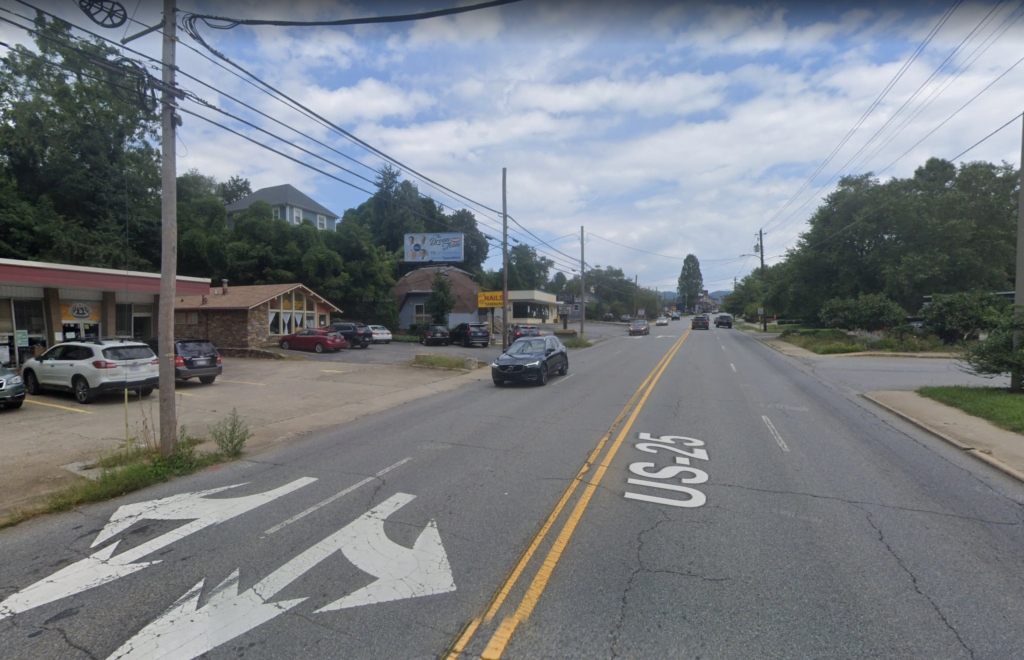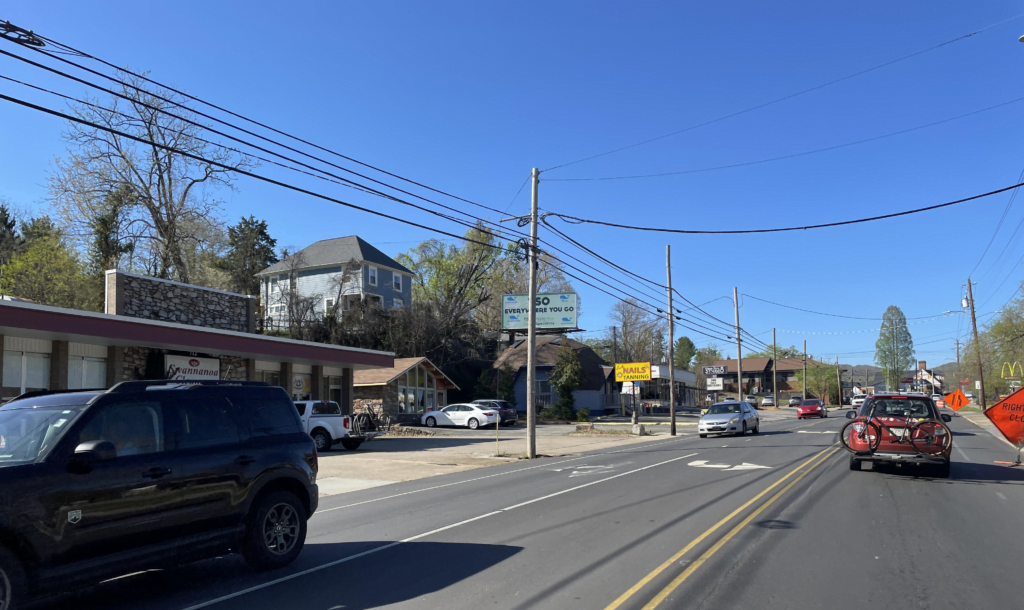The City of Asheville has worked with the North Carolina DOT to make a 4-to-3 lane conversion of Merrimon Avenue, a road that connects North Asheville to Downtown and I-240. The current design is a textbook stroad: it attempts to provide both movement and access at the same time, but does neither well. And like many stroads, it has a poor safety record. According to the city, there is a “150% higher rate of crashes on Merrimon compared to other similar roadways across the State.”

Source: Google Street Maps, September 2022.
Like many laudable goals, transportation safety tends to meet serious backlash when implemented. This project is no exception. It’s gotten a fair amount of criticism by some who don’t enjoy the new design yet. The project is not finished, so judgment is a bit premature at this point. Projects like this have to be considered in a holistic context. Any project will have tradeoffs and I think planners have to be honest about them—but so do critics.
The main criticism of the project is traffic congestion. By no means is this criticism unanimous, but it’s the one that seems to be center stage for the opposition. Let’s take this criticism at face value and assume that rush hour is particularly bad due to the new three lane configuration. This is one downside. But what are the benefits?
First and foremost is increased safety. The US ranks poorly on traffic injuries and fatalities among developed nations, and planners know why. Our roads are designed for speed and throughput at the expense of safety. Automobile companies have made great progress designing safety features into their cars, but engineers and planners have done a terrible job designing safety features into our roads. Merrimon Avenue is a poster child for dangerous design, and projects like the three-lane configuration reflect planners and engineers’ ability to recognize the importance of safety and prioritize it over speed and throughput.
What’s so dangerous about Merrimon Avenue now? Four lane roads create blind spots when turning left because traffic in the innermost lane blocks the view of the outer lane for turning traffic. They also encourage traffic weaving when someone is stopped in the left lane. Because of how wide and open the road is, drivers naturally respond to this design by going faster, no matter what the speed limit says.
The new design eliminates the turning blind spot, narrows the road to reduce traffic speed, and adds a bike lane to encourage multimodal transportation. If and when there is traffic congestion, cars are moving slower. This reduces the severity of any collisions that may occur and significantly reduces the risk of serious harm or death for pedestrians and cyclists. Not only is this road configuration safer for drivers, it’s also safer for the road’s most vulnerable users.

Photo by author, April 2023.
The second most obvious benefit is that new, safe bike lanes are likely to increase the number of people riding bikes. This has three clear benefits. One is an increased number of people on bikes. Research has shown that there is safety in numbers. Second is increased public health. Biking is also associated with health benefits and decreased health care costs. Third is a reduction in climate emissions. That means less overall carbon that Asheville contributes to the atmosphere but also less local pollution that people living near Merrimon Avenue deal with on a daily basis.
The third benefit, contrary to some anecdotal information, is increased economic activity. Studies on road diets across the country show that, contrary to popular belief, these new designs are actually better for businesses. This makes some intuitive sense. Cars traveling more slowly have more opportunity to see businesses from the road. Safer turning configurations means drivers feel more comfortable turning into businesses. And the new bike lanes mean potential new customers that would not have been using the road before.
The journey to safer streets is not an easy one and, admittedly, it will come with tradeoffs. North America has a long way to go before it realizes anything close to Vision Zero, and no street project alone will achieve success overnight. Merrimon Avenue is just one piece of the puzzle and puzzles don’t come together all at once. While the downside of traffic congestion may be very real and frustrating for some commuters, the new design appears to have at least a few amazing benefits. The question we can now ask is: is the tradeoff worth it?